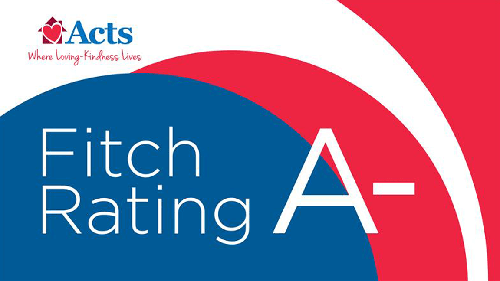An Overview of Senior Living Options

You’re likely wondering, “what type of senior housing option is right for me?" Independent living communities and continuing care retirement communities (CCRCs) focus on providing an energetic and engaging lifestyle for active older adults. Some of these communities may offer health care services. Alternatively, there are specialized senior living options that focus on providing supportive health services, such as assisted living and skilled nursing facilities. But how do you know what you need? And which options are best to ensure you’re taken care of in the future? Let’s explore seven senior living options below:
Options for Senior Living Include:
- Aging in Place
- Independent Living Communities
- Assisted Living Communities
- Skilled Nursing Care Communities
- Continuing Care Retirement Communities
- Moving in with Adult Children
- House Sharing
Read below for more specific information on these options.
The Most Common Types of Senior Housing Options
Here is a general overview of popular housing options available to retirees:
1. Aging in Place
Aging in place refers to the practice of older adults continuing to reside in their existing homes rather than moving into a retirement community or downsizing to a smaller living space. Older adults who age in place often have to make adjustments to their homes to accommodate any accessibility concerns and hire home healthcare providers as their needs change. Many choose to avoid the disadvantages of aging in place by exploring other independent living options for seniors.
2. Independent Living Communities
Independent living communities cater to self-sufficient older adults who want an active and socially fulfilling lifestyle and don’t require aid for daily tasks. These communities foster connections among residents of similar age groups, often featuring a range of recreational, social, and physical activities.
With a focus on independence, they generally don’t provide extensive healthcare services unless they are a CCRC, making them ideal for those who don’t require or expect to require medical attention but are looking to downsize.
There are various independent living options for seniors including apartments, condos, cottages, and townhomes. Many provide essential services such as dining options and helpful services such as regular housekeeping, complementing the enriching social experiences they offer to residents.
3. Assisted Living Communities
Assisted living facilities are designed for those who require some support with activities of daily living (ADLs), while ensuring access to a range of social activities and amenities. These communities provide a special combination of residential housing and healthcare services to adults who may pose safety concerns by living alone. Typically, residents of assisted living facilities need moderate assistance with tasks such as meals, bathing, and medication management, allowing them to maintain a level of independence within a supportive environment.
4. Skilled Nursing Care Communities
Skilled nursing care communities, or nursing homes, are an ideal senior living option for those in need of 24-hour nursing care due to complex medical needs or chronic conditions that exceed what assisted living communities can provide. These facilities specialize in tailored care and housing for individuals with Alzheimer's, dementia or related diseases. With continuous medical attention from in-house nurses, doctors, and other healthcare professionals, skilled nursing care communities ensure a high level of support for residents with diverse medical requirements.
5. Continuing Care Retirement Communities
Continuing care retirement communities (CCRCs), or life plan communities, provide older adults with the full spectrum of lifestyle and healthcare options - from independent living to assisted living to skilled nursing care - all on one campus. Many retirees prefer CCRCs as a senior housing option since they can move into independent living when they are self-sufficient and can receive a higher level of care as their needs change without having to relocate. CCRC contract types vary, with some providing a guarantee of healthcare services to residents without an increase in price, and others providing healthcare services a la carte or "fee for service."
6. Moving in with Adult Children
7. House Sharing
Which Type of Housing Will Best Meet Your Retirement Needs?
Everyone’s retirement situation is different—which means there’s no right or wrong answer when it comes to retirement living options. Therefore, it helps to start by asking yourself a few questions.
Are you invested in your existing home? Can you afford to live there and do you have a strong local social network in place already? Then aging in place may be a good option. Keep in mind that the house will become more burdensome as you age.
Are you planning for any healthcare most of us inevitably need in the future? Do you want a wider array of social and recreational options without the maintenance? Do you want the peace of mind of knowing your nest egg is secured? A continuing care retirement community may be the better choice. Otherwise, if you wait until your health has declined too far, your options will likely be limited to pricey assisted living or skilled care centers, commonly referred to as “nursing homes.”
In the end, the different permutations of what constitutes “ideal” for you are so diverse and varied that no two retirees are ever going to have the same perfect place to live. If you consider affordability, social contacts, amenities, healthcare options, and all the other factors that are in play, you will be able to come up with the best solution to your senior housing needs.
ADLs Can Help in Choosing Your Best Option for Senior housing
The best way to decide on the best retirement living option is to evaluate your Activities of Daily Living (ADLs). These are basic self-care tasks that you should be able to do without assistance. They include bathing, personal hygiene, dressing, and feeding yourself. If you can do all these things, then you’re probably not in need of more intensive support from an outside source. However, if you’re starting to notice that you or your spouse’s ADLs are getting more difficult, it’s probably a good time to take that into consideration as you make your retirement decision.
How Much Do These Senior Living Options Cost?
Depending on your level of need, pricing options will often vary when you make a retirement decision. Different types of retirement communities that offer more in-depth care usually come with a bit of a higher price tag as well—but the trade-off is worth it for your peace of mind.
Another factor is cost. The larger the housing option, the higher the cost. This is why the best retirement value is often a one-bedroom apartment in a CCRC. Residents receive the same level of amenities in addition to as-needed health services, but for the lowest possible price at that community.
Acts' retirement community options include independent, assisted, and skilled nursing communities. At our CCRCs, residents' fees include the potential cost of increased care—which means we never raise our prices solely based on assistance needs. Those in need can also receive direct admittance into the same reversed assisted living and skilled nursing care campuses our residents use.
To learn more about Acts communities and find one that might be right for you, take a look at our communities.
Read Our Senior Living Community Resources Below
- Senior Living in Wilmington, DE: A Day in the Life of a Resident
- Finding the Best Places to Retire in Pennsylvania
- Retire in the Florida Panhandle: Discover Pensacola, Fl
- Senior Independent Living in Gainesville, GA: Get the Inside Scoop
- Making a Retirement Decision: Everything You Need to Know About Senior Living in Lansdale, PA
- Where to Retire in Delaware County, PA: Culture, History, and Commerce
- Easy, Breezy Living in Coastal Beauty: 6 Reasons You'll Love Senior Living in Pensacola
- A Growing Southern City with Charm: 9 Reasons Why to Retire in Huntsville, Alabama
- 10 Reasons to Spend Your Golden Years Retired in Florida
- 6 Reasons You Should Consider Retiring in Georgia
- Want to Retire to Delaware? 10 Reasons Why That’s a Great Idea
- Thinking About Retiring to Maryland?
- 11 Wonderful Reasons to Retire to Alabama
- 5 Retirement Community Myths Dispelled
- What’s So Great About Retirement Living in Pennsylvania?
- 10 Good Reasons to Retire to South Carolina
- 18 Reasons to Retire in North Carolina: Retiring in NC
- Retiring to Florida Has More Benefits Than a Friendly Climate
- The Acts Lifestyle
- 28 Campuses in 1






